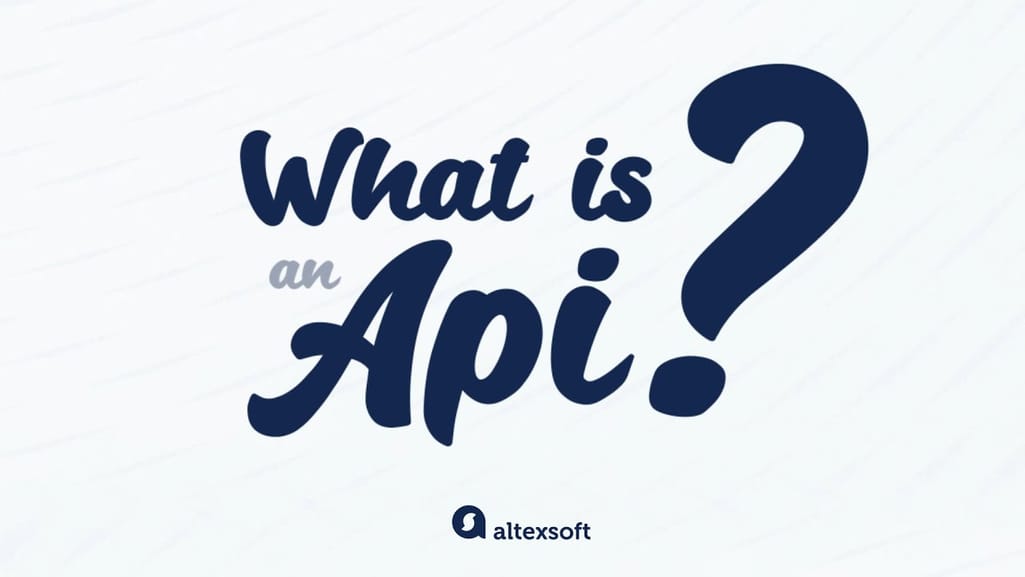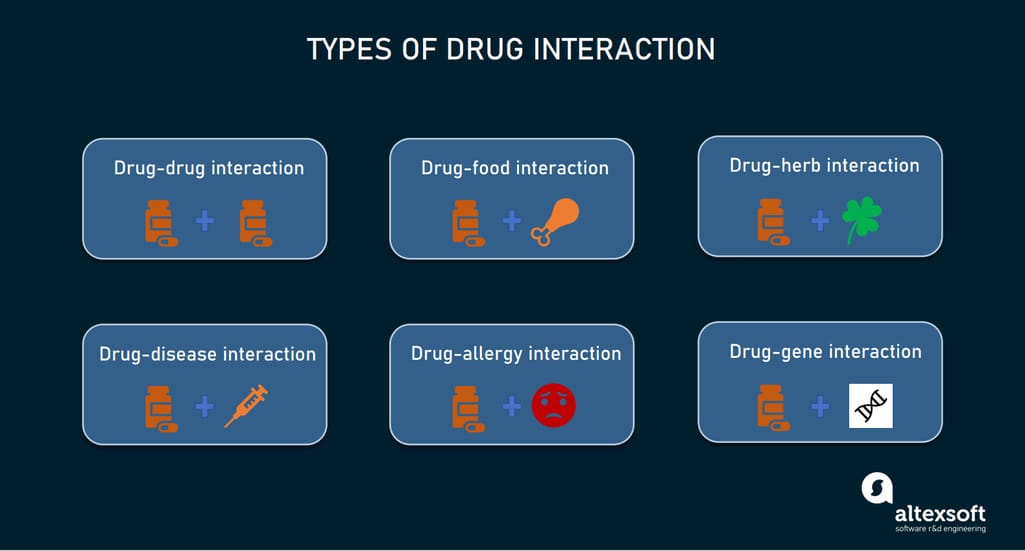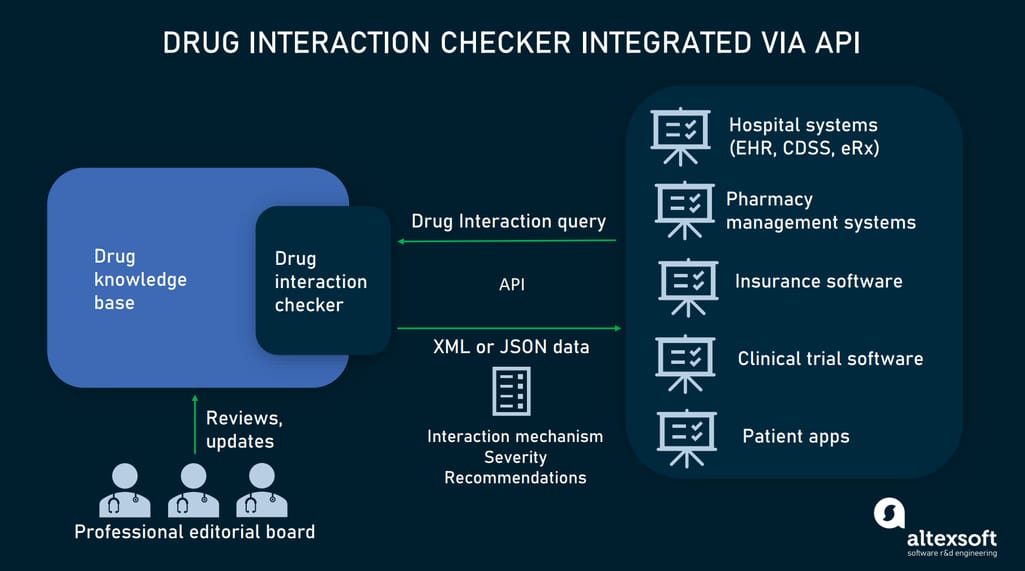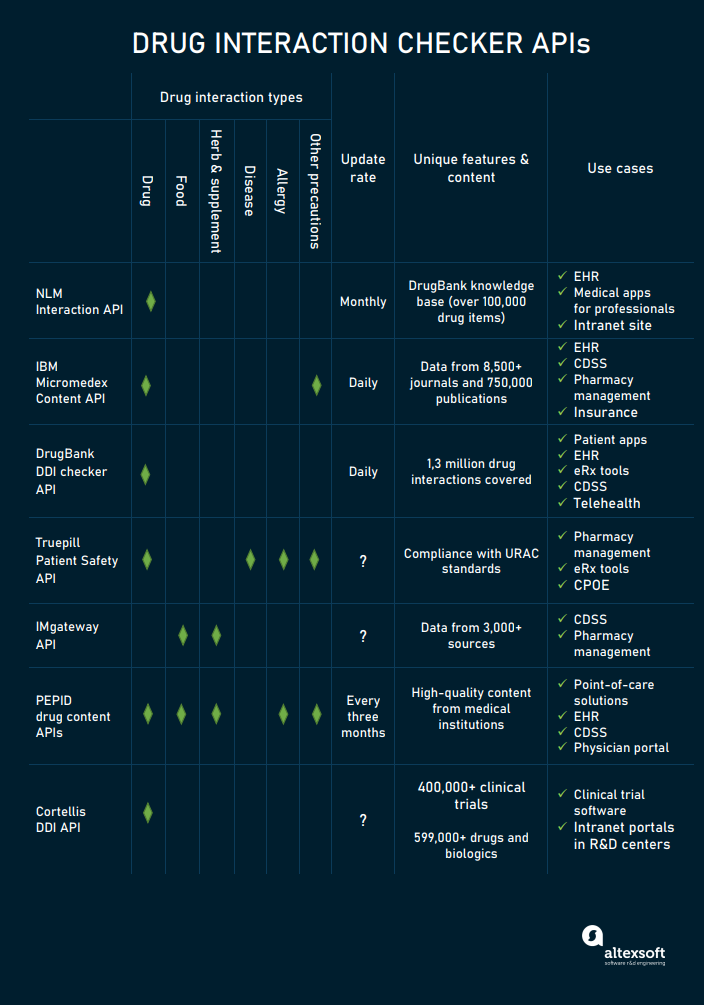If your medicine chest is chock full of prescriptions, welcome to the club. According to the National Center of Health Statistics, one in five Americans between the ages of 40 and 79 took at least five drugs in the past 30 days.
As the number of pills used in parallel grows, so does the probability of dangerous drug interactions. To eliminate the risk of side effects caused by medication combos, hospitals and pharmacies should be equipped with robust drug interaction checkers.
As the number of pills used in parallel grows, so does the probability of dangerous drug interactions. To eliminate the risk of side effects caused by medication combos, hospitals and pharmacies should be equipped with robust drug interaction checkers.
This article explore APIs that enable health facilities to quickly integrate drug checking functionality into their existing systems. If you have only a fuzzy notion of what an API is, please watch our video explanation.


The video explains API connections and principles using metaphors from everyday life.
The next section introduces the main types of drug interactions. But if you're already familiar with the essentials, skip this part and go straight to the drug interaction module description and APIs overview.What is drug interaction?
A drug interaction happens when the effect of a certain medication on the body is altered by another substance or factor. Countless cases of such unwanted combinations fall into the following groups:- drug-drug interactions (DDIs, for short),
- food-drug interactions,
- drug-herb / drug-supplement interactions,
- drug-disease interactions,
- drug-allergy interactions, and
- drug-gene interactions.

Drug interactions can affect the course of treatment.
Below, we’ll examine why each of these scenarios matters and must be considered.Drug-drug interaction. Taking together five or more drugs, known as polypharmacy, has become commonplace — not to mention simultaneous administration of fewer medicines.
Drug-food interaction. Food and beverages can bind to active pharmaceutical ingredients reducing their absorption or catalyzing their elimination. The most common food and drug interactions are
- dairy products decreasing the effect of antibiotics;
- grapefruit juice interfering with some drugs that treat high blood pressure;
- green, leafy vegetables, high in vitamin K, reducing the efficacy of anticoagulants; and
- alcohol causing dangerous reactions when mixed with certain medications.
Drug-disease interaction. Sometimes a drug treating a certain illness aggravates another disorder. For instance, beta blockers used to combat heart disease may worsen asthma.
Drug-allergy interaction. Drug-allergy checking involves storing information on patient allergies and their severity in the EHR and warning on possible problems when prescribing drugs.
Drug-gene interaction. People with certain gene variations may be at risk of unexpected reactions and even toxicity. To alert to this type of interaction, decision support tools must be fed with actual genomic information.
Besides that, the effect of drugs can change due to
- age,
- pregnancy and lactation,
- gender,
- weight, and
- lifestyle.
Drug interaction module as a part of healthcare IT ecosystem
A drug interaction checker is a vital part of hospital information systems that helps clinicians improve treatment and minimize the number of errors. The module is built on a drug database that contains monographs on each drug interaction. Typically, if the interaction is detected, the checker returns an entry with- a description of the interaction mechanism,
- a level of severity, and
- actions to be taken in response to the alert.

Drug interaction checking via API.
The checker can be integrated directly with an EHR system or embedded into a clinical decision support system (CDSS), e-prescribing (eRx), or computerized physician order entry (CPOE) software.A drug interaction module also increases the efficiency of
- pharmacy management systems,
- solutions used by insurance companies,
- clinical trial software, and
- medication management apps used by patients.
If your system still lacks this important functionality or runs drug checking on outdated content, adding a modern tool through an API is the fastest way to fill the gap.
APIs to check drug interactions: comparison of features and capabilities
Drug checking solutions available via APIs differ in the number of interaction types covered, sources of information used, the size of the knowledge base behind the module, and the frequency of updates. Some of them are designed primarily for professional use, others deliver information in a more patient-friendly form.With this in mind, let’s examine some options that might help clinicians make the right decision.

Drug interaction API comparison.
NLM interaction API: free DDI checking for all EHRs
Primary use cases: EHR systems, applications for professional use, intranet siteThe API developed by the US National Library of Medicine (NLM) focuses on drug-drug interactions leveraging two sources of information:
- DrugBank, a pharmaceutical knowledge base with data on over 100,000 drug items; and
- the High Priority list of DDIs recommended by the Office of the National Coordinator for Health Information Technology (ONC) to be used in all EHRs.
First, API users can’t send more than 20 requests per second per IP address. To decrease the number of calls, NLM advises developers to cache results for a period of 12 to 24 hours.
Second, products benefiting from NLM resources must indicate that they extract data from the NLM, National Institute of Health, and Department of Health and Human Services.
Third, developers are prohibited from using the NLM name or logo in connection with their apps.
IBM Micromedex content API: drug dosing and drug-drug interaction listings
Primary use cases: EHR systems, CDSS, pharmacy management systems, insurance softwareAs one of the largest online databases for drug information, Micromedex by IBM delivers medical content extracted from roughly 8,500 journals and 750,000 publications to over 4,500 hospitals on a subscription-based model. Currently, IBM also offers access to its clinical evidence and data insights via a RESTful API.
This enables developers to embed clinical evidence into an EHR system, decision support tool, hospital webpage, or mobile application. All content is delivered in JSON format.
Micromedex knowledge base contains detailed information on drug dosing and medication management, treatment protocols, and comprehensive drug-drug interaction listings. It also covers intravenous compatibility when mixing two drugs for injections.
DrugBank DDI checker API: drug interaction descriptions and management tips
Primary use cases: EHR systems, medication management apps for patients, eRx software, CDSS, telehealthThe drug-drug interaction checker based on the DrugBank database is available through an integration-ready API supporting JSON files. The solution allows users to search for medications by ingredient identifiers, product identifiers (NDC or RxNorm codes), or product concept identifiers.
Each DDI alert indicates the severity of an interaction, describes its mechanism, and explains how to manage the issue.

A DDI entry on the interaction between Acetaminophen and Warfarin.
The database contains over 1.4 million interactions and sees daily updates. So once a new pharma product taps into the market, the information on it appears in DrugBank. The content is extracted from clinical guidelines, drug labels, and scientific literature.Truepill Patient Safety API: drug-drug, drug-disease and drug-allergy interaction checkers
Primary use cases: pharmacy management systems, software for retail pharmacies, CPOE and eRx toolsTruepill API platform creates a link between pharmacies and customers providing a suite of e-prescribing services. It supports daily order volumes of up to 100,000 prescriptions following strict accreditation standards set by URAC (Utilization Review Accreditation Commission).
Highly customizable APIs support JSON format and make a foundation for an end-to-end pharmacy, e-prescribing, or telehealth solution. Yet, each of them can be integrated separately to complement the existing system or app.
In particular, drug interaction checking is accessible via the Patient Safety API with the so-called Drug Utilization Review (DUR) feature. It checks drugs against predefined criteria before the medication is dispensed, during the course of treatment, and after the patient has taken the drug. This allows clinicians and pharmacists to identify and resolve problems before they occur. Among other challenges, the DUR addresses
- drug-drug interaction,
- drug-disease interaction, and
- drug-allergy interaction.
IMgateway interaction database API: drug-food and drug-herb checker for professional use
Primary use cases: CDSS, pharmacy management systemsThe Integrative Medicine Gateway, or IMgateway for short, is a commercially unbiased information resource for medical professionals. Its editorial board collects data from over 3000 industry-standard content providers, including government websites, research databases, medical and complementary medicine journals.
In partnership with the University of Sydney, IMgateway developed a database covering over 1000 drug interactions with foods, herbs, and other supplements. The evidence-based knowledge base can be integrated into the healthcare application via API.
PEPID drug content APIs: checking drugs against herbs, supplements, foods, and allergies
Primary use cases: point-of-care solutions, EHR systems, CDSS, physician portalPEPID, a leading provider of clinical decision support technologies, offers two interaction checkers available via separate APIs. The tools can be easily integrated with EHR and other point-of-care information systems.
A drug interaction checker pinpoints contradictions between a medication prescribed to a patient and other drugs, herbs, dietary supplements, and foods. It returns a list of all unwanted interactions ranked by severity and with the description of each reaction.
A drug-allergy checker examines medications prescribed to a patient against his or her food or drug allergies and alerts health professionals to any potential sensitivities and adverse events.
Also, PEPID provides API access to their drug database with monographs containing
- adult and pediatric dosing
- adverse reactions,
- pregnancy and lactation precautions,
- contraindications, and
- other data to minimize medical errors.
Cortellis drug-drug interactions API: facilitating clinical trials
Primary use cases: clinical trial software, intranet portal in research and development (R&D) centersCortellis intelligence platform aims at accelerating innovation in pharma, biotech, and diagnostic companies, academic institutions, and research centers. It delivers data insights across the entire R&D lifecycle leveraging data on over 400,000 clinical trials and 599,000 drugs and biologics.
A suite of solutions from Cortellis includes a drug-drug interactions API. Each interaction comes with at least one associated scientific study. The API may help in designing better pharmaceutical products, optimizing the effectiveness of drug candidates, and improving treatment protocols.
Adopting a drug interaction checker: integration checklist
A relevant, regularly updated drug interaction checker promises a lot of benefits. It enables doctors and pharmacists to make faster and better decisions, improves patient safety, facilitates innovations, and paves the way for precision medicine — but only if properly implemented in the existing processes. Here are some essential tips for successful integration.Partner with a reliable development team. Though you don’t have to create the checker from the ground up, you still need developers to execute integration and make sure that the module properly interacts with other components of your system.
Manage alerts to avoid alert fatigue. Physicians and pharmacists sometimes find that the checker returns too many alerts of questionable significance. This may lead to situations when a clinician overlooks really important notifications. So, before launching, test the solution and set alert priorities by categories and severity levels.
Train your staff. Interaction checkers are easy to use. Still, you have to make sure that your clinicians have no issues with the tool, providing them with comprehensive instructions.
Always ask a doctor. No software solution can be a substitute for the advice of a licensed physician. That’s what administrators and patients must keep in mind when using a drug interaction checker.

